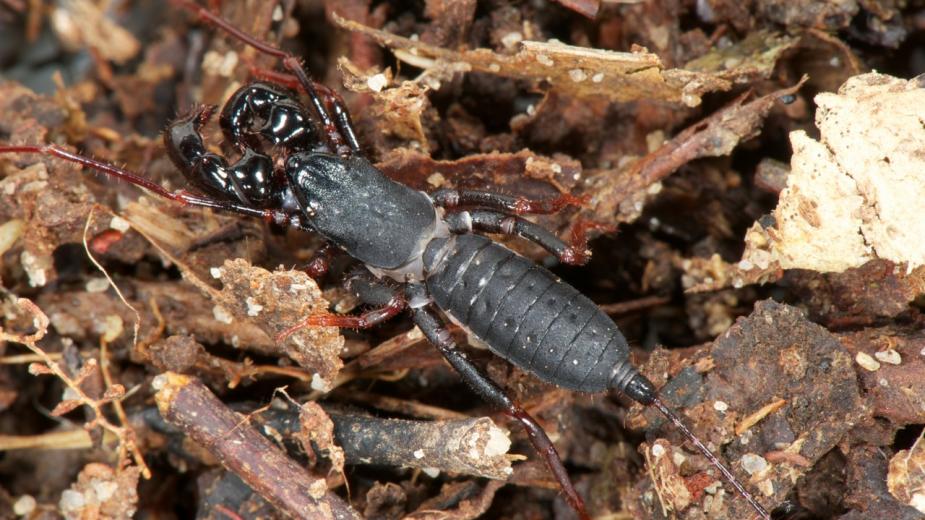Whip scorpions of the World has been designed to provide some taxonomic information on whip scorpions and a comprehensive list of the scientific literature.

What are Whip Scorpions?
Whip scorpions are medium to large arachnids with large robust pedipalps, a pair of two-segmented chelicerae, four pairs of legs, of which the first pair are somewhat elongated, and a sub-rectangular abdomen terminating in a long multi-segmented flagellum. The common name whip scorpion is derived from the latter feature.
They are considered to be the sister-group to the schizomids (Schizomida) with which they share numerous features, such as the presence of repugnatorial abdominal glands.
Whip scorpions are mostly restricted to tropical and sub-tropical environments.
Phylogeny
Unfortunately, there have been no phylogenetic studies on whip scorpions.
Fossil Fauna
Fossilised whip scorpions are derived from Palaeozoic and Mesozoic deposits. The four Palaeozoic genera (Geralinura, Parageralinura, Proschizomus and Prothelyphonus) have been found in Europe, Asia and North America, while the sole Mesozoic genus—Mesoproctus—derives from the Crato Formation in Brazil.
This website contains published data up to the end of 2011.
Important references
- Harvey, M.S. (2003). Catalogue of the smaller arachnid orders of the world: Amblypygi, Uropygi, Schizomida, Palpigradi, Ricinulei and Solifugae. CSIRO Publishing: Melbourne.
- Rowland, J.M. and Cooke, J.A.L. (1973) Systematics of the arachnid order Uropygida (= Thelyphonida). Journal of Arachnology 1: 55-71.


